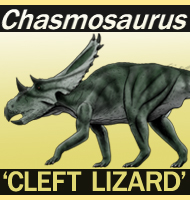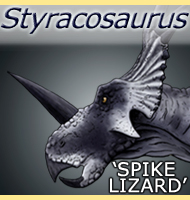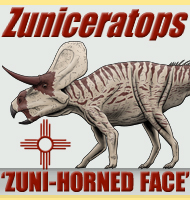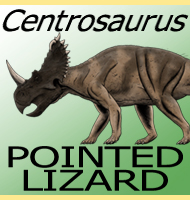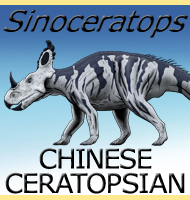


Cloudina
Name: Cloudina.
Phonetic: Clow-de-nah.
Named By: Germs - 1972.
Synonyms: Aulophycus lucianoi.
Classification: Animalia, Cloudinidae.
Species: C. hartmannae
(type), C. carinata, C. lucianoi, C.
ningqiangensis, C. xuanjiangpingensis.
Diet: Filter feeder?
Size: Specimens range between 8 to 150
millimetres long, 03. to 6.5 millimetres across.
Known locations: Possibly global distribution with
specimens found across Africa, Asia, North America and South
America.
Time period: Ediacaran of the Cambrian.
Fossil representation: Many individuals of varying
sizes and completeness.
Cloudina
is one of those Cambrian animals that is both very exciting in
evolutionary terms, yet much mystery still surrounds it. Cloudina
represents one of the first examples of a creature known to have had a
hard mineralised shell, and before the discovery of this genus, all
other known creatures of the Ediacaran period were soft bodied.
During this time much of the sea floor was covered in microbial mats
which seem to have been the main living area for ocean life during this
time. Cloudina however is usually found in areas
where there would
have been no microbial mat. Maybe Cloudina was
among the first
animals to venture away from the microbial mats, maybe they were
uprooted by tidal current to dwell elsewhere, we don’t yet know for
certain.
The
shell of Cloudina resembled a series of upside down
cones stacked on
top of one another. The soft body of the organism was situated inside
the shell, and in life the end of this soft body, perhaps with some
kind of tendrils or filaments may have reached out to extract
nutrients or organic matter passing by in the ocean currents. There
is even speculation that in life the shell may have been flexible,
though this is not yet certain. Even more telling about Cloudina
though is that the shell, presumably evolved to be some kind of
defence, sometimes shows sign of attack in the form of holes caused
by boring. This suggests that even though Cloudina
was
‘armoured’, some animals had already evolved an effective means of
attack to penetrate the hard shell to eat the soft body inside.
Further reading
- New shelly fossils from Nama Group, South West Africa. -
American Journal of Science. 272 (8): 752–761. - G.
J. B. Germs - 1972.
- The early skeletal organism Cloudina: new
occurrences from Oman
and possibly China. - American Journal of Science. 290:
245–260. - S. Conway Morris, B. W. Mattes &
M. Chen - 1990.
- Shell structure and distribution of Cloudina,
a potential index
fossil for the terminal Proterozoic. - American Journal of
Science. 290-A (290–A): 261–294. S. W. Grant -
1990.
- Predatorial Borings in Late Precambrian Mineralized Exoskeletons.
- Science. 257 (5068): 367–9. S. Bengtson &
Y. Zhao - 1992.
- Some observations on Cloudina, a terminal
Proterozoic index
fossil from Namibia. - Journal of African Earth Sciences. 33
(3): 475–480. - C. K. Brain - 2001.
- Borings in Cloudina Shells: Complex Predator-Prey Dynamics in the
Terminal Neoproterozoic. - PALAIOS. 18 (4–5): 454. -
Hong Hua, Brian R. Pratt & Lu Yi Zhang - 2003.
- A Revised Morphology of Cloudina with
Ecological and Phylogenetic
Implications. - A. J. Miller - 2004.
- Skeletogenesis and asexual reproduction in the earliest
biomineralizing animal Cloudina. - Geology. 33 (4):
277–280. - H. Hua, Z. Chen, X. Yuan, L. Zhang
& S. Xiao - 2005.
- Inconsistencies in proposed annelid affinities of early
biomineralized organism Cloudina (Ediacaran):
structural and
ontogenetic evidences. - Carnets de G�ologie. - O. Vinn
& M. Zatoń - 2012.
- Transitional Ediacaran–Cambrian small skeletal fossil assemblages
from South China and Kazakhstan: Implications for chronostratigraphy
and metazoan evolution". Precambrian Research. 285: 202–215.
- Ben Yang, Michael Steiner, Maoyan Zhu, Guoxing Li, Jianni
Liu & Pengju Lu - 2016.
- The end of the Ediacaran: Two new exceptionally preserved body
fossil assemblages from Mount Dunfee, Nevada, USA. - Geology.
44 (11): 911. - E. F. Smith, L. L. Nelson, M.
A. Strange, A. E. Eyster, S. M. Rowland, D. P.
Schrag & F. A. MacDonald - 2016.
- Discovery of bilaterian-type through-guts in cloudinomorphs from
the terminal Ediacaran Period. - Nature Communications. 11
(205): 205. - James D. Schiffbauer, Tara Selly, Sarah
M. Jacquet, Rachel A. Merz, Lyle L. Nelson, Michael A.
Strange, Yaoping Cai & Emily F. Smith - 2020.
Random favourites
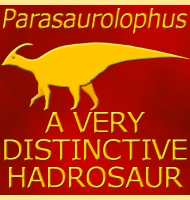 |
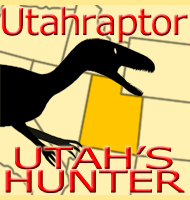 |
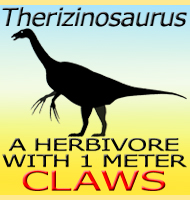 |
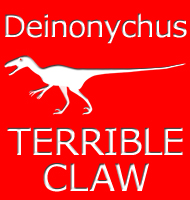 |
